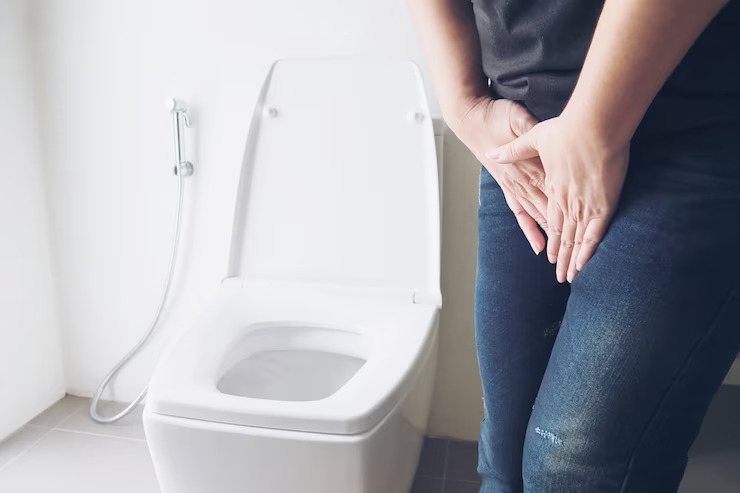Preventive Healthcare
Don't Let UTIs Control Your Life: Understanding the Causes, Symptoms, and Treatment of Urinary Tract Infections

Table of Contents
Urinary tract infections can cause abnormal discharge, urinogenital inflammation, and frequent genital itching. It causes bacterial growth around the urinogenital tract. This can spread to the bladder, ureters, and kidneys upon neglect.
In addition, individuals with casual intimacy, frequent birth control implants or poor immunity may contract UTIs. Read this article to learn more about what causes UTI, potential symptoms, and available treatments.
What are The Potential Causes of UTI Infection?
Potent antibiotic therapy and lifestyle measures are the first choices for UTI treatment against the pathogenic onslaught. Before explaining the course of UTI treatment, check out these essential measures for enhanced personal hygiene.
- Enterococcus
- Klebsiella
- Proteus
- Pseudomonas
1. Lifestyle Issues
Women in menopause are more prone to urinary tract infections. It often happens from little or no use of contraceptives during intercourse.
Besides, some individuals have a genetic predisposition. The infection rate is enhanced by poor sanitary hygiene. This makes potential pathogens multiply in the urinary tract.
2. Frequent Use of Birth Control Methods
Unlike condoms, women using diaphragms and implants are also vulnerable to developing UTI infections.
In addition, the lack of trained hands when inserting birth control measures through the vagina leads to unwarranted pathogenic transmission.
3. Anatomical Anomalies
Urinary tract infections can occur from anatomical abnormalities in children and adults. This includes urinogenital inflammation leading to protruded genitals.
This leads to the growth of unwanted pathogen growth in the urinary bladder. Such acute infections can cause bladder blockages, leading to inflammation and the obstruction of ureters.
4. Poor Immunity
People with incurable diseases like HIV, hepatitis and diabetes are more susceptible to urinary tract infections.
It impairs the natural immunity to fight potential pathogens. In addition, people with poor immunity are vulnerable to developing carcinogenic complications like cervical and prostate cancer.
5. Previous Exposure
Patients with a clinical history of urinary tract infections may get infected again. Factors like incomplete antibiotic treatment lead to pathogenic resistance.
In addition, healthy patients may become infected with UTI strains upon exposure to non-sanitised clinical setups. Also, unhygienic catheter insertion and illegal abortions make you vulnerable to developing UTIs.
How to Recognise Underlying Symptoms of Urinary Tract Infection?
Early symptoms of UTI infections include unexplained urinogenital discomfort and abdominal inflammation. In addition, the infection expands specifically on the presence of the pathogen.
Urinary tract infections comprise lower (urethra and bladder) and upper (ureters and kidneys). Consult your doctor for a quick diagnosis if you experience one or more symptoms:
1. Lower Urinary Tract Infection
- Frequent urination
- Inflammation when urinating
- Abnormal urination volume
- Cloudy texture and foul-smelling urine
- Passing blood with urine
- Marked lower abdominal discomfort and lower backache.
2. Upper Urinary Tract Infection
- You may experience serial inflammation and pain around the upper abdominal region spreading out sideways.
- Includes recurring high fever
- Triggers frequent nausea and vomiting.
- Cause unexplained chills and tremors.
What are The Potential UTI Treatments?
Primary UTI treatment requires antibiotic therapy and lifestyle measures. This is to prevent a recurring pathogenic onslaught. Before expanding on the course of treatment depending on underlying pathogens, check out these essential measures for intimate hygiene:
1. Stay Hydrated
Drink adequate water to stay hydrated for regular urination. This is a regular technique to flush out harbouring pathogens.
2. No Compromise With Personal Hygiene
Maintain optimal sanitary hygiene (washing thoroughly after defecation). Wash your hands frequently before or after touching the genital area.
3. Do Not Apply Unknown Cosmetics
Abstain from applying OTC products in your intimate area unless prescribed by your physician.
4. Wear Comfortable Fabrics
Choose loose garments made of natural fibre. They comfortably absorb sweat. This ensures optimal circulation against the growth of pathogens in the urinogenital area.
How Many Types of UTI Treatment?
Physicians classify urinary tract infections into simple and complex. This depends on the underlying location of the pathogens. Men and children show complicated UTIs (pathogen and anatomical complications), while women show simple UTIs (only pathogen driven).
Complicated urinary tract infection is more than pathogenic gene resistance against available treatment methods. Women mostly experience pathogenic urinary tract infections with more complex symptoms than UTI infections in children and men.
1. Simple Urinary Tract Infection Treatment
Most uncomplicated urinary tract infections recover after a brief dosage of a suitable antibiotic. However, some cases require extensive treatment. Urinogenital inflammation and frequent urge to urinate reduce after a few doses. Again, this is not over without the completion of prescribed treatment to ensure a complete wipeout of existing pathogens.
In addition, women during menopause may require hormonal therapy. This is because natural oestrogen concentration can reduce UTI infections. Oestrogen imparts an antimicrobial secretion. It cleanses underlying pathogens. It also helps tighten the surrounding tissues. This makes them smooth to prevent the anchoring of pathogens in the urinogenital system.
2. Complex Urinary Tract Infection Treatment
Complicated UTI infections require multiple therapies to counter the underlying pathogenic onslaught. Initially, the patient will receive intravenous antibiotic delivery for rapid action. The next line of treatment includes additional oral medications to eliminate any potential pathogenic presence.
Besides treating advanced UTI infections, the course of treatment includes reversing damage to ureters and kidneys. In extreme cases, laparoscopic surgery is the likeliest option to prevent sepsis.
Conclusion
Urinary tract infection is a curable condition. However, it's not free from a chronic relapse without a complete course of antibiotic treatment. Women are more prone to contract recurrent UTIs than men. Besides, a preventive lifestyle is essential to reduce further chances of contracting pathogens.
Never ignore urinogenital discomfort. An untreated infection can affect your kidneys. Consult your physician if you experience repetitive symptoms of UTI infection post-recovery.
Your doctor may suggest a Urine Culture Test for a thorough diagnosis. Do you prefer a privacy-friendly sample collection? Check out Metropolis Lab, offering the best pathological test offers with complimentary doorstep collection through qualified phlebotomists.


























